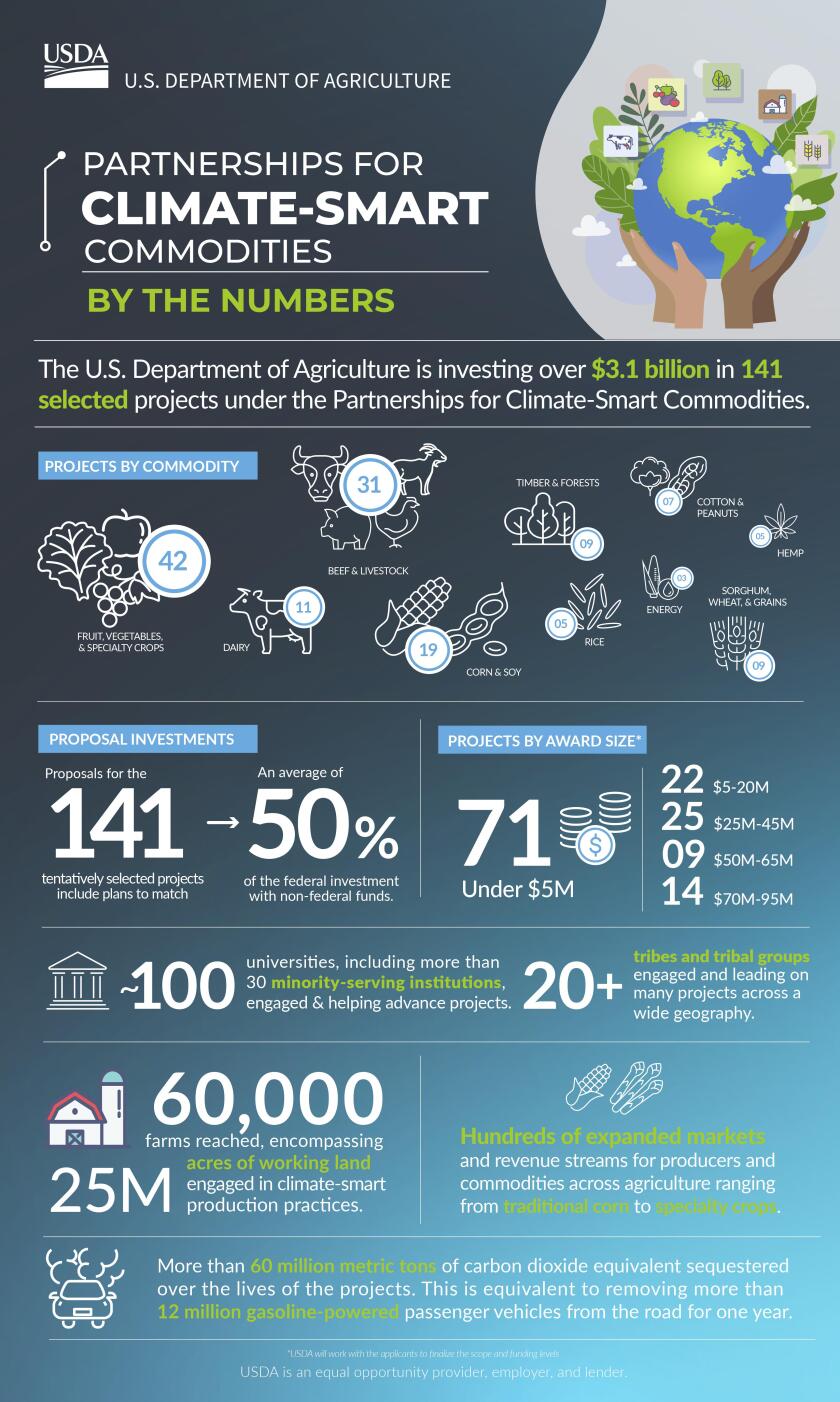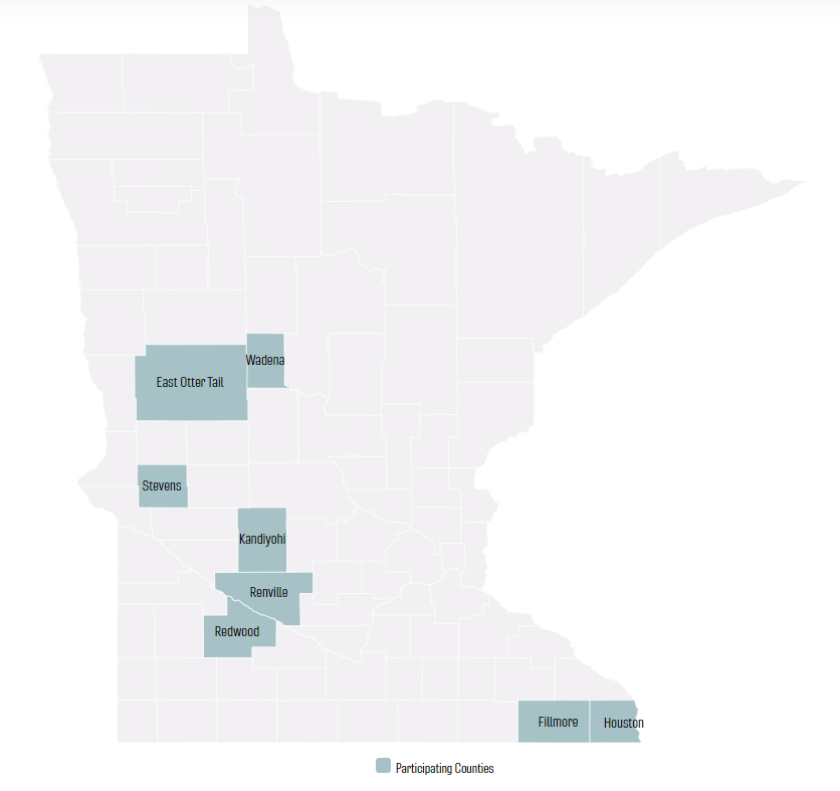PARKERS PRAIRIE, Minn. — Applications for a new USDA program that rewards producers for their conservation practices are expected to pour in from July 15 to Aug. 16 in eight counties in Minnesota.
Producers in East Otter Tail County and Wadena County heard about the opportunity to earn $100 per acre or $100 per animal unit if their applications are selected for enrollment in the program during an informational meeting on Thursday, July 11, at three separate East Otter Tail and Wadena Soil and Water Conservation District meetings.
ADVERTISEMENT
Producers learned that they must apply and be selected in a lottery process handled by Virginia Tech University. To qualify for enrollment they must implement that delivers public value through carbon sequestration, greenhouse gas reduction, improved soil health, water quality, water conservation and other environmental services. That could include practices such as cover crops, conservation crop rotation, residue and tillage management, pasture and hay planting, prescribed grazing, nutrient management, silvopasture, feed management and more.
East Otter Tail and Wadena County Soil and Water Conservation District manager Darren Newville led the meeting and shared that there has been a lot of interest in the funding opportunity and many questions since it was first announced.
“So this program was announced about a year ago … we had people contacting us then and we didn't know anything about it,” Newville said. Again more announcements came through the Minnesota Board of Water and Soil Resources earlier in the year and more people reached out. When they announced the informational meetings, another deluge of people reached out. Between meetings in Perham and Parkers Prairie, nearly 50 people showed up to hear more. As it is a pilot program led by an outside agency, the SWCD is learning as they go.
Newville felt most producers are likely to jump on the cover crop practice as it’s something that many are already set up to use in their operations.
“It’s something that they’ve done a little bit with, and I think that with this it will allow them to do a little bit more,” Newville said.
And while farmers like Steve Inwards of Parkers Prairie were already implementing some conservation practices into their rotation, he understood that to qualify, these had to be new practices. That means he can’t enroll acreage on which he is already implementing these qualifying practices, but he can select acres that he’s not doing those practices — up to 160 acres per farm.

“Cover crops are catching on fast in this area,” Inwards said. He said reduced tillage is on people’s minds, but due to the high expense of the equipment, it’s one that few have access to. He was encouraged by the fact that funds would be flowing in to encourage good land stewardship. He said that’s an area that East Otter Tail County has been focused on progressing towards.
ADVERTISEMENT
He was glad to see producers finally seeing some reward for these efforts, though he thought the government could do better at rewarding those who have already been implementing these practices for many years without outside incentives.
“I think they are making a mistake at the federal level by not rewarding those that have already done it out of their own pocket,” Inwards said.
Newville noted that farmers can enroll up to two farms for a maximum of 320 acres and a maximum return of $32,000.
That’s not a small amount and some producers shared that they would be foolish not to apply.
Yes, there is a time commitment involved as this work requires self-reporting and self-verification during the year of enrollment. Some enrollees can be selected at random for review by the overseeing agency.
The goal is that these practices would contribute toward reduced emissions, enhanced climate resilience and increased productivity. Newville said while the naming of the funds is off putting for some because of the climate focus, he sees climate funding as conservation funding.
“I always say, conservation programs are conservation programs, it doesn’t matter where the funds are coming from or what you’re calling it,” Newville explained. “So it really does help us with our mission of helping landowners adopt conservation practices on their land."
ADVERTISEMENT
There were some signs of apprehension from some farmers in the group who raised questions about why the government wasn't spending the money on road repair. Others expressed concerns over having to apply online. Newville’s response was that he didn’t have a say about how the federal dollars were spent, but if they are going to be available, producers might as well apply and get some money back into farming. He added that SWCD staff are available to help walk producers through the process and answer questions all along the way either over the phone or in person.
“So we’re really encouraging people to contact our offices and let us help them through that process,” Newville said.
While this is just a pilot program and rewards enrollees for one year of implementing the practice, Newville said long term he hopes that the conservation practices stick.
“So hopefully that’s what happens with this is — they try it, they see the benefit of it and they continue to do that in their operation moving forward,” Newville said.
Are you eligible
Other participating Minnesota counties eligible to apply until August 16 include Fillmore, Houston, Kandiyohi, Redwood, Renville and Stevens.
The minimum to enroll is 3 acres or 10 animal units within one of the approved districts.

Enrollees must have a verified Farm Service Agency (FSA) number and:
ADVERTISEMENT
- Confirm that the land enrolled and the practice(s) requested will not also be enrolled in a USDA conservation program or other program associated with the USDA’s Partnerships for Climate Smart Commodities sponsored grant program.
- Confirm that the land enrolled and the practice(s) requested will not be dually enrolled in a cost-share program.
- Confirm that the producer will have control of the land for the term of the producer agreement.
- The producer must consent to report total greenhouse gas benefits using COMET, Fieldprint and/or RUSLE2.
Applications will be at
during the open enrollment period. Hard copies will be available at district offices.
Statewide, producers can contact David Weirens at BWSR at either david.weirens@state.mn.us or at 763-229-4308.
Funding
Funding for the Alliance to Advance Climate-Smart Agriculture comes from $3.1 billion that the USDA committed through the Partnerships for Climate-Smart Commodities . This is one of 141 programs being funded through this funding source. About $12 million is available to producers in Minnesota through the new program. That’s out of $80 million total that’s part of the three–year pilot program available to producers in Arkansas, Minnesota, North Dakota and Virginia.













